How to Determine the Correct Saddle Height
The correct saddle height and saddle position are essential for enjoyable and injury free rides on your road bike. But how do you know what seat height is right for you? And how do you determine the correct setback?
There are various methods which you can use to get to the correct saddle height and setback for your road bike. We’ve listed the three most popular methods to determine the correct seat height below. And we also show you how to determine the correct setback of your saddle.
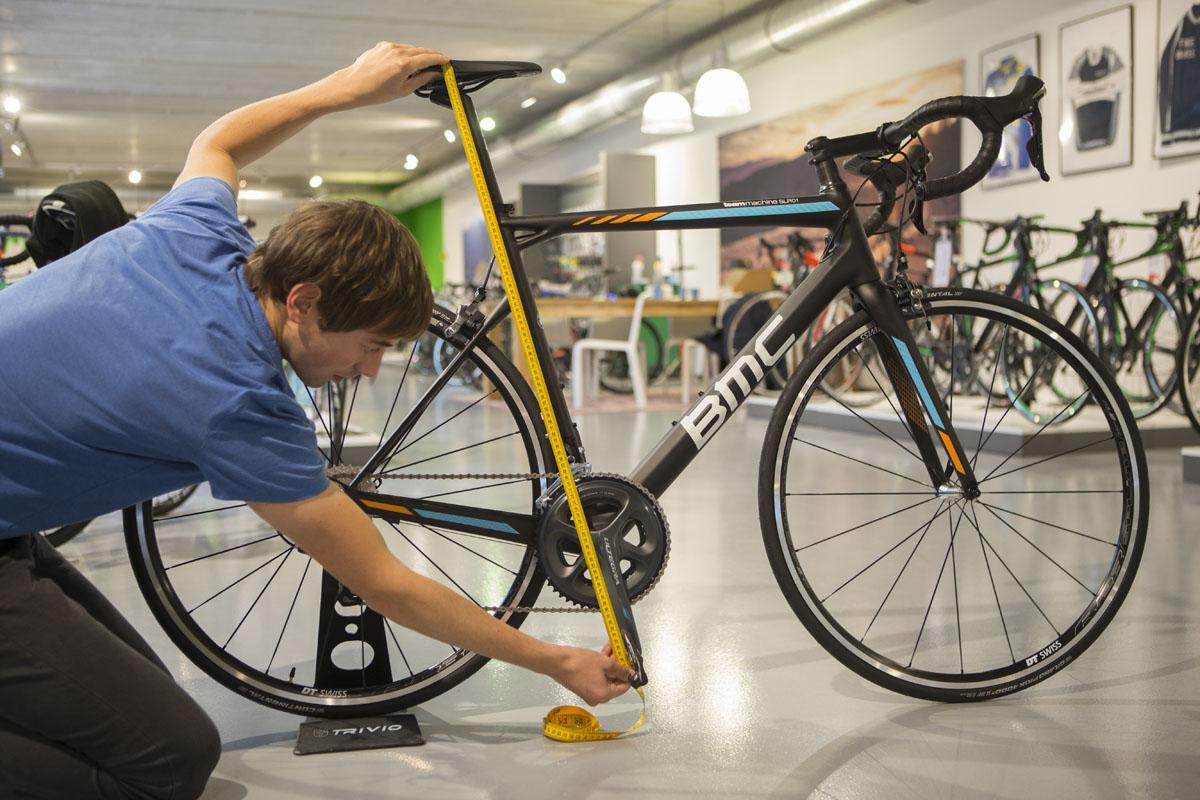
Before changing the height of your saddle, you should measure your current saddle height. If you change the setup, it’s always a good idea to know how high or low your saddle was set before the changes.
When measuring the seat height, you have to make sure that the crank arm is pointed down and in line with the seat tube. Then you measure from the centre of the pedal axle to the top of your saddle. Always note down your saddle height.
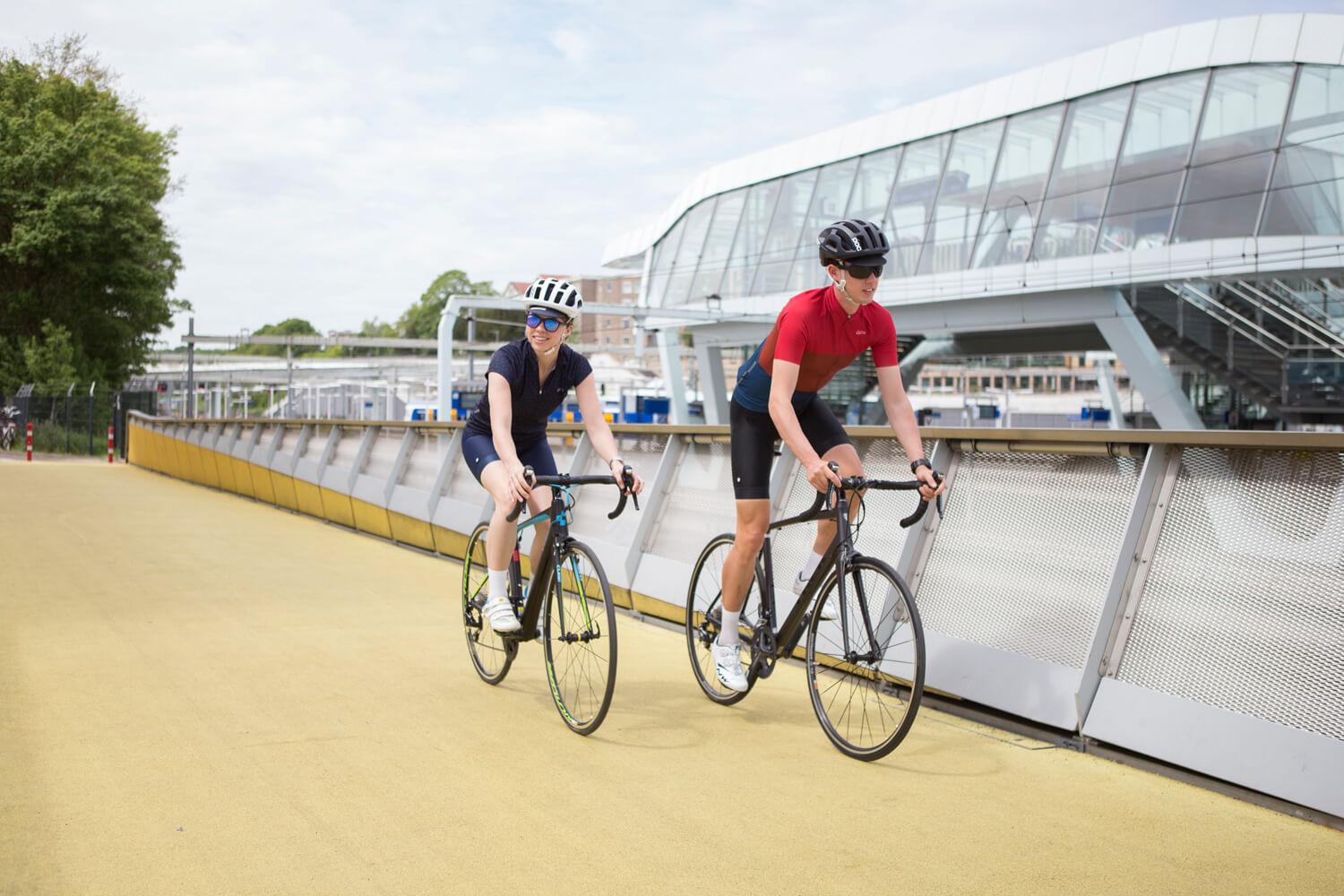
If your saddle is set too low or too high, it can cause all kinds of problems, from painful knees to neck and back problems. Do the problems worsen after a change, or do you get new problems? If you know your previous seat height, you can at least reset your saddle to the correct saddle height.
Three methods to determine the saddle height
Heel method
The heel method is being used by many road cyclists to determine the saddle height. This is a quick and easy way to check whether your seat height is correct. But it also is the least precise method.
Step 1
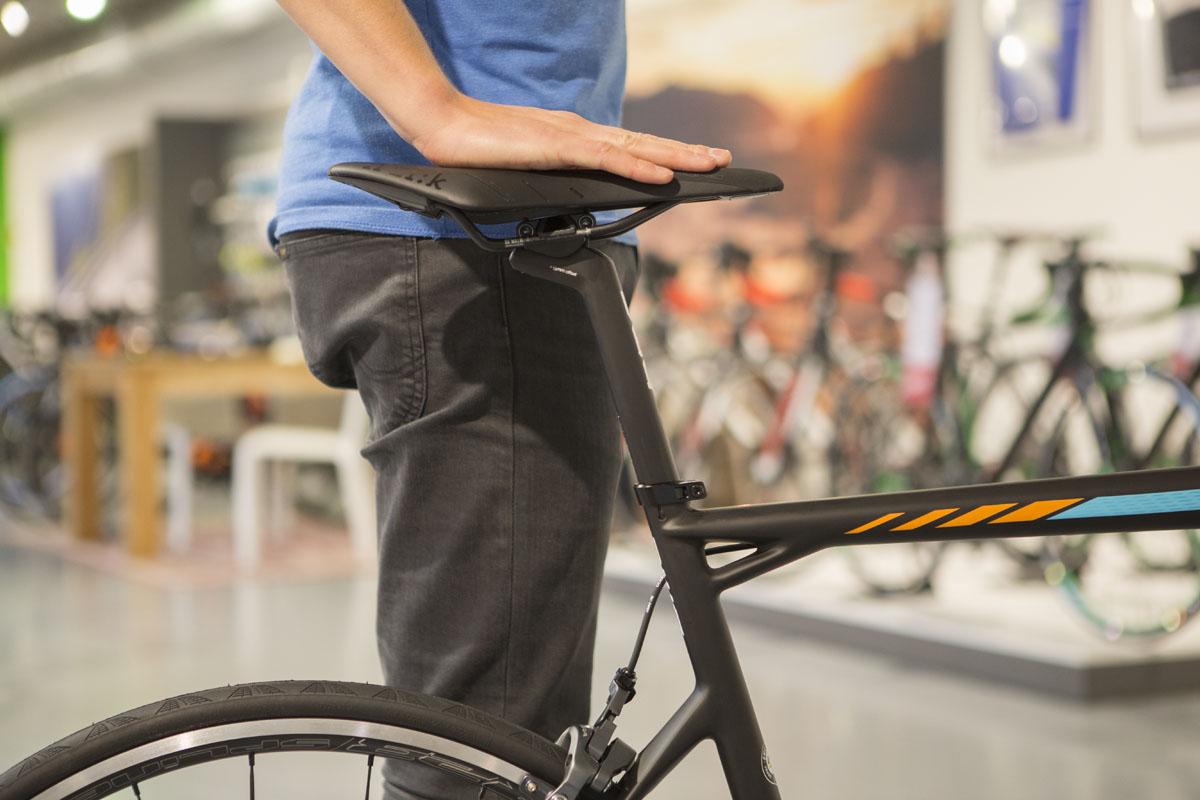
Stand next to your bike and raise the saddle to your hip.
Step 2
Sit down on the saddle and touch the pedal with your heel. Make sure the crank arm which is currently supporting your foot is pointed down and in line with the seat tube.
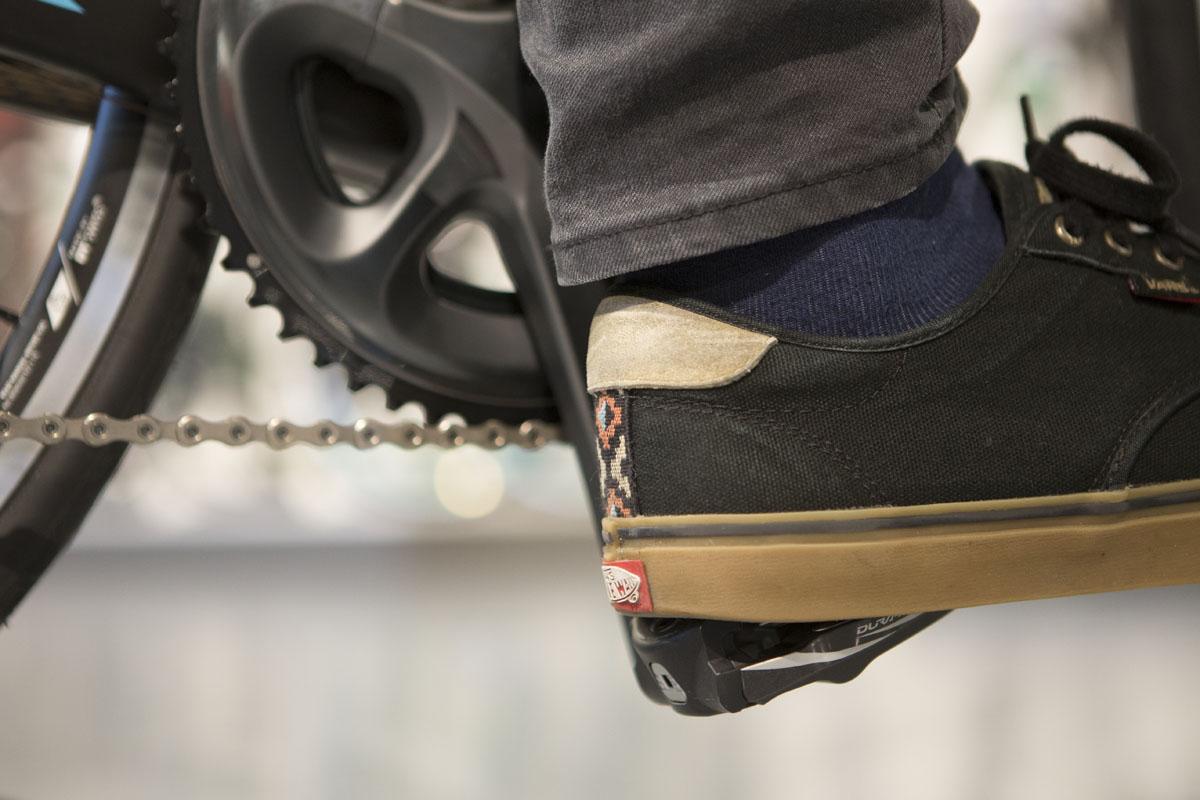
Step 3
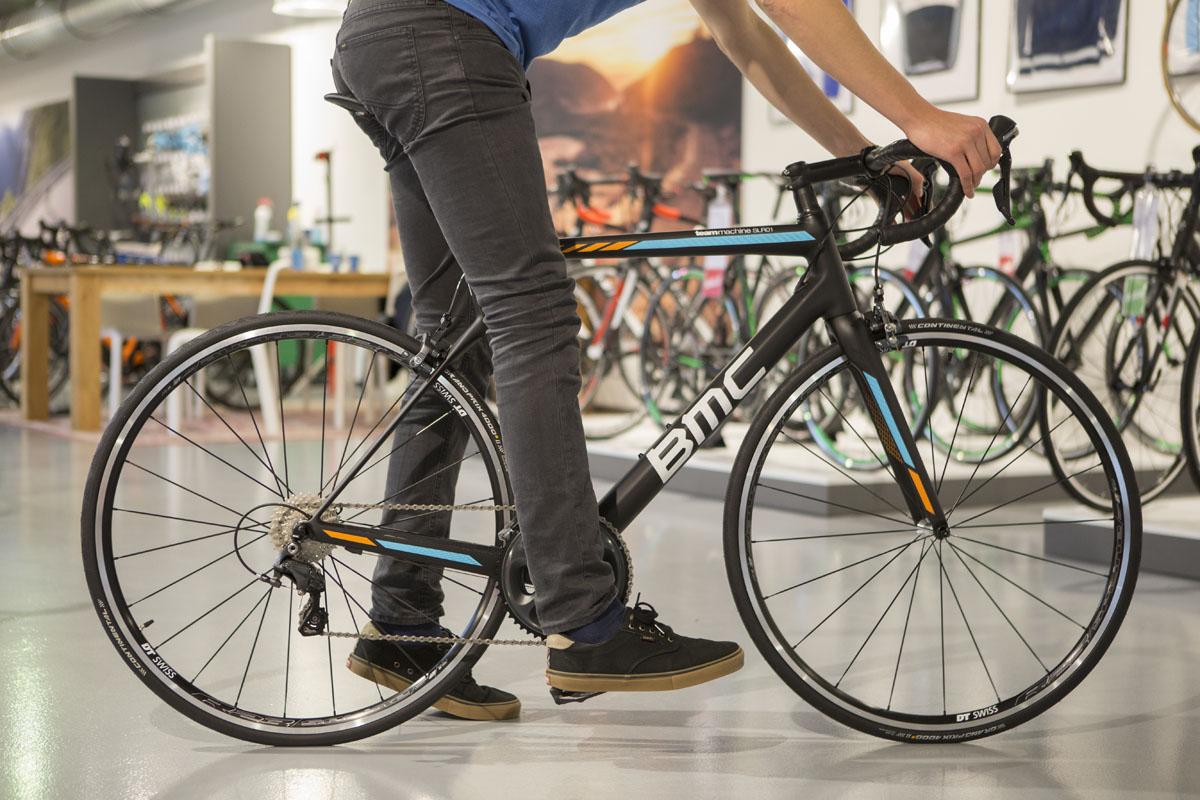
You’re at the correct saddle height if your leg is now fully extended. That means your leg is straight, but without overextending your knee.
The 109% method
With the 109% method, you get a very precise result. Officially, you therefore get a better result than with the heel method only.
Step 1
Stand barefoot against a wall with a fairly thick book clamped between your legs. Firmly pull the book upwards, it’s supposed to feel slightly uncomfortable.
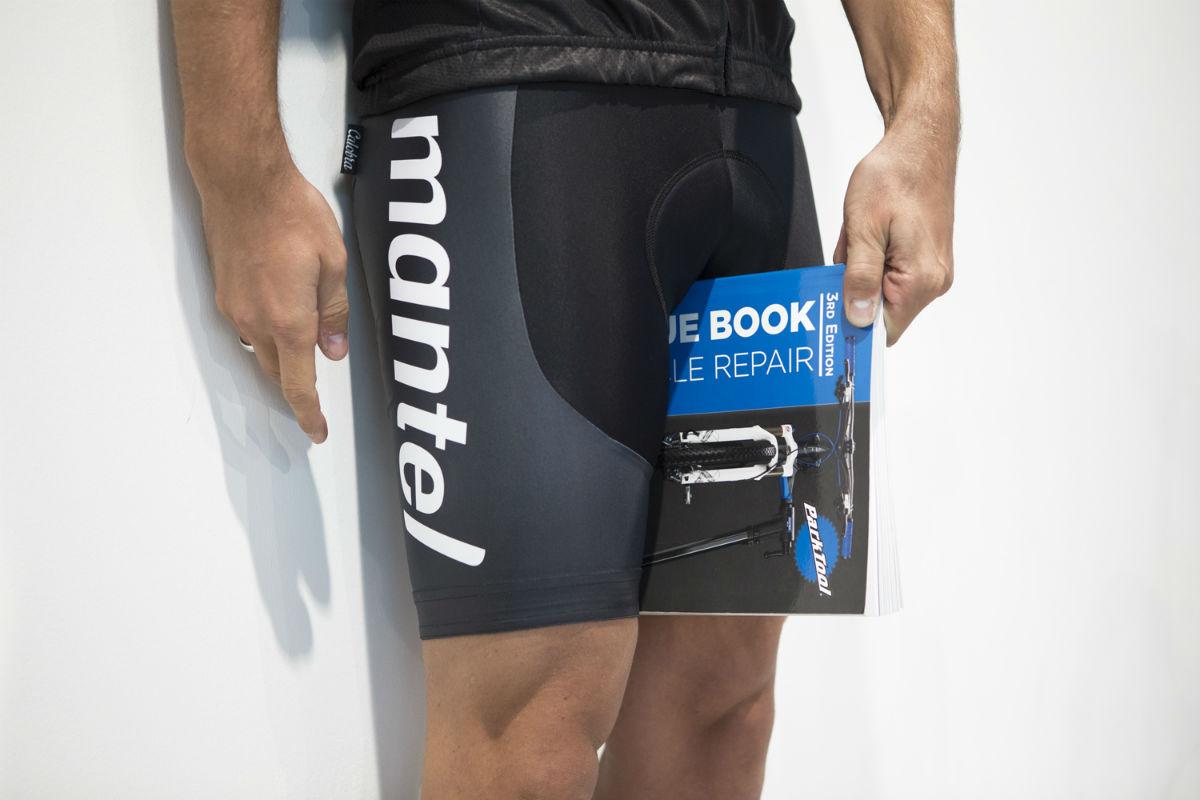
Step 2
Mark the top of the book on the wall. This mark indicates your inseam.
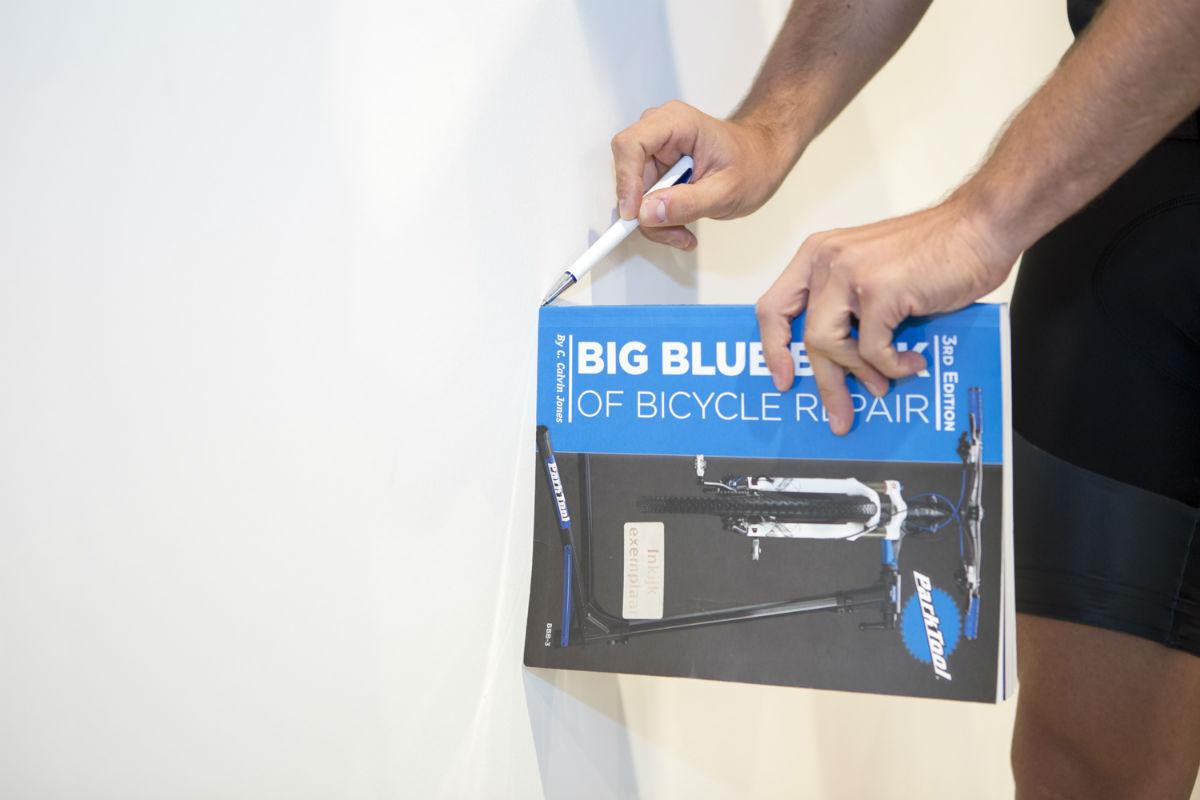
Step 3
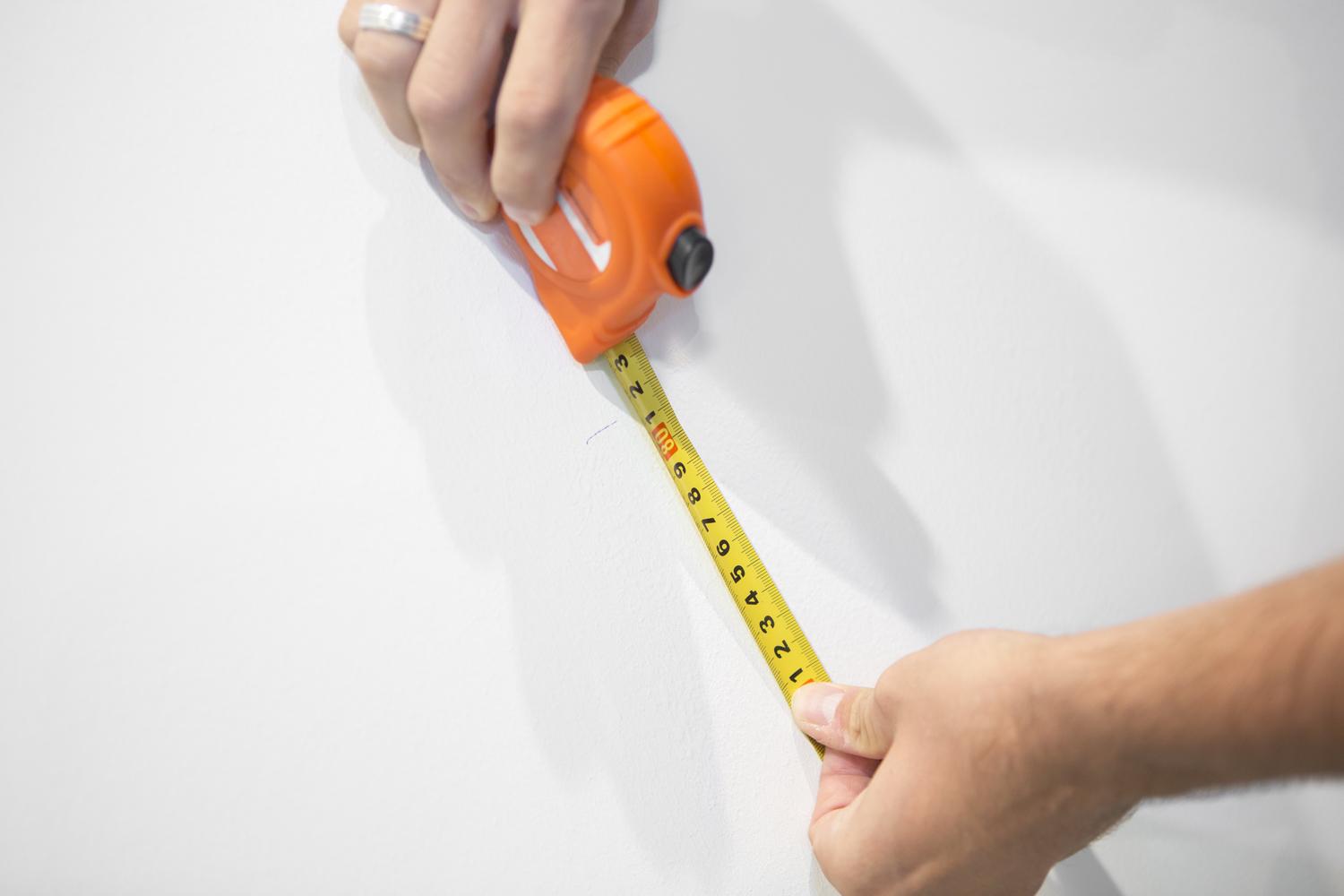
Now measure the distance from the mark to the ground in millimetres. This is your inseam.
Step 4
Calculating your ideal saddle height based on your inseam is easy. On average, the seat height should be 109% of your inseam. You can thus use your calculator to multiply your inseam in millimetres by 1,09.
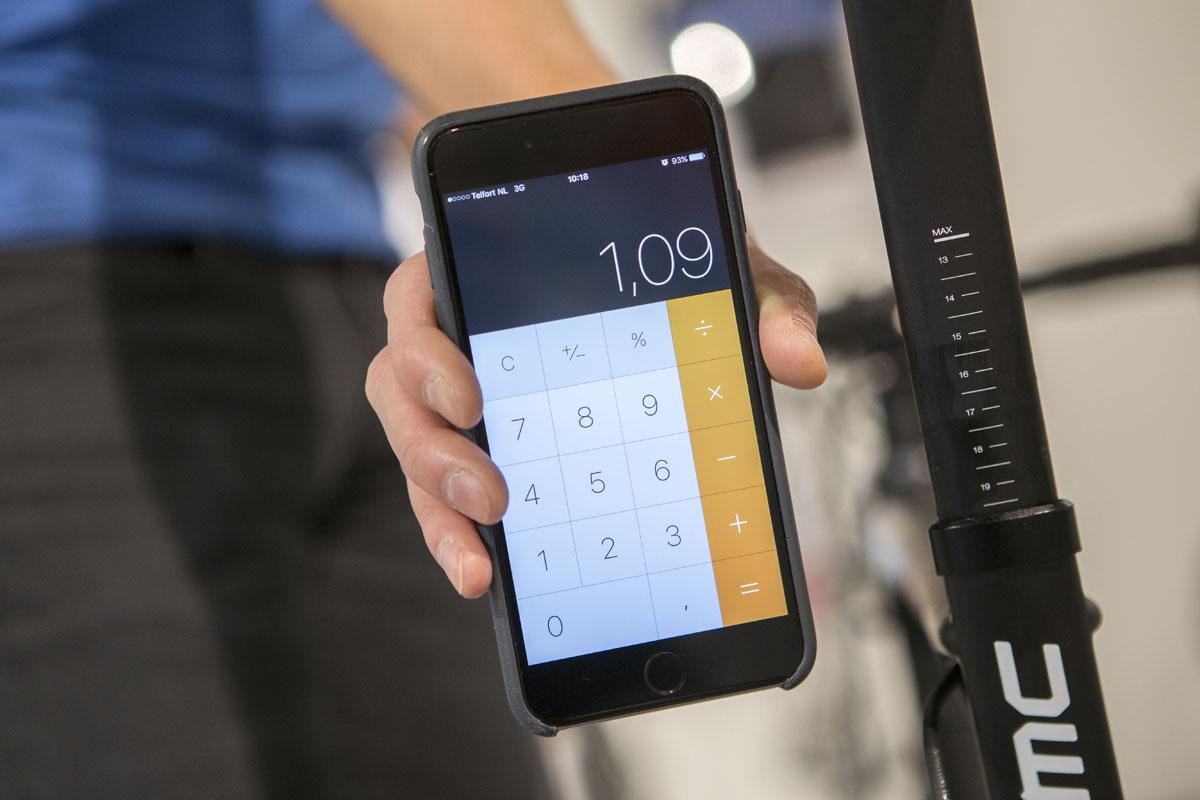
The result is your seat height in millimetres.
The Holmes method
The last method to determine your seat height is the Holmes method. It’s a bit more precise because the way you put your feet on the pedals is taken into account. The first two methods don’t take it into account.
According to the Holmes method, the ideal knee angle is between 25 and 35 degrees. This angle is the difference between your upper and lower leg when your pedal is in its lowest position. Do you suffer from knee problems? Then the value should be somewhat closer to 25 degrees.
You can determine this by yourself. But you do need a turbo trainer or a roller and a helpful friend to film you.
Stap 1
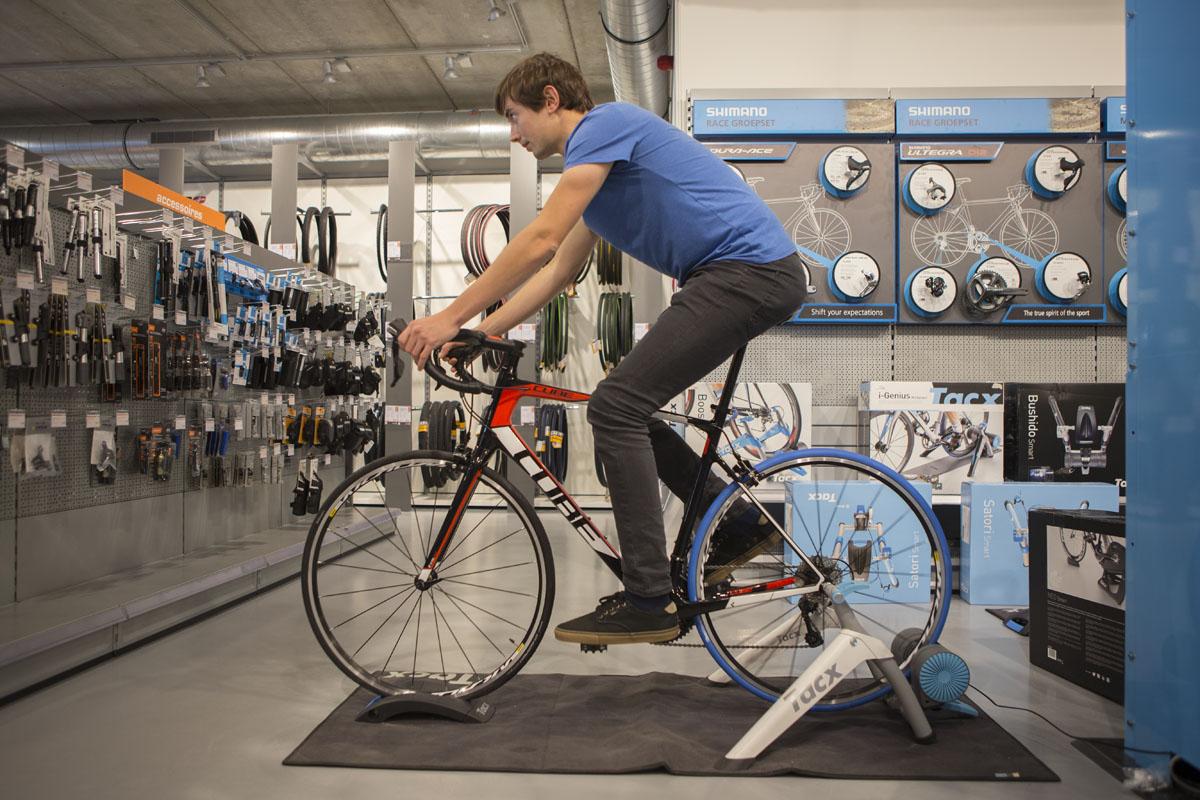
Mount your bike on the turbo trainer and start riding.
Step 2
Get someone to film you from the side while riding on the turbo trainer. Record for a minute or slightly longer, so that you can measure several times.
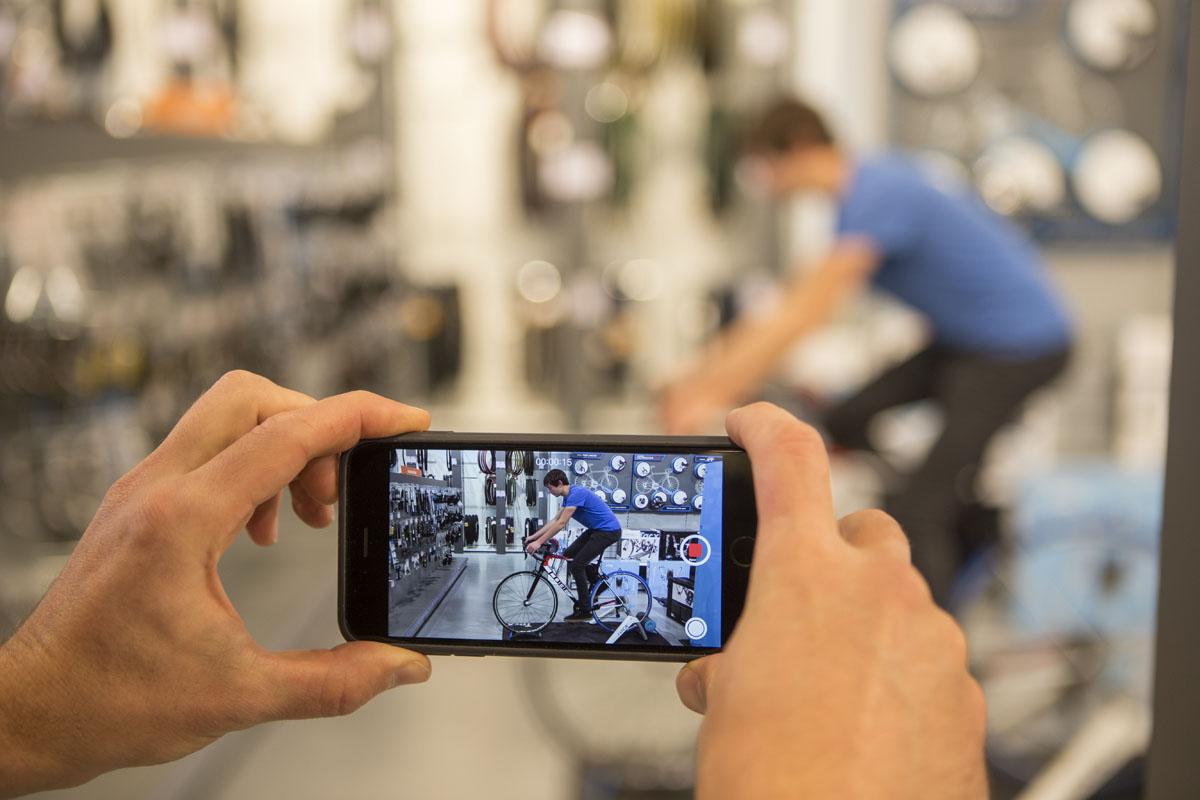
Step 3
Look at the recording and pause it the moment your pedal is in the lowest position. Use a set square to measure the angle.
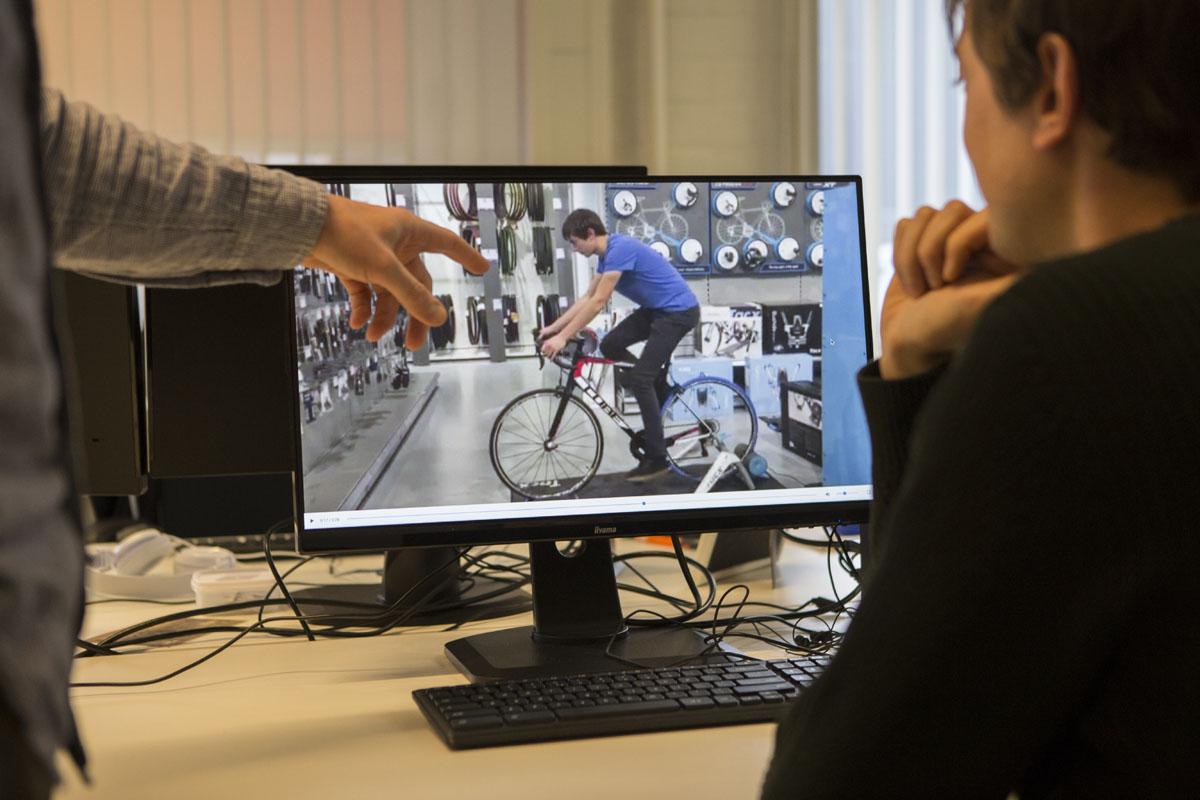
Is the angle larger than 35 degrees? Then you have to raise your saddle. Is the angle smaller than 25 degrees? Then your saddle has to be lowered a bit.
Your saddle’s setback - the horizontal position
Now that you’ve determined the correct height of your saddle, it’s important to also check whether your saddle is not too far forward or back. This horizontal position of your saddle is called the setback.
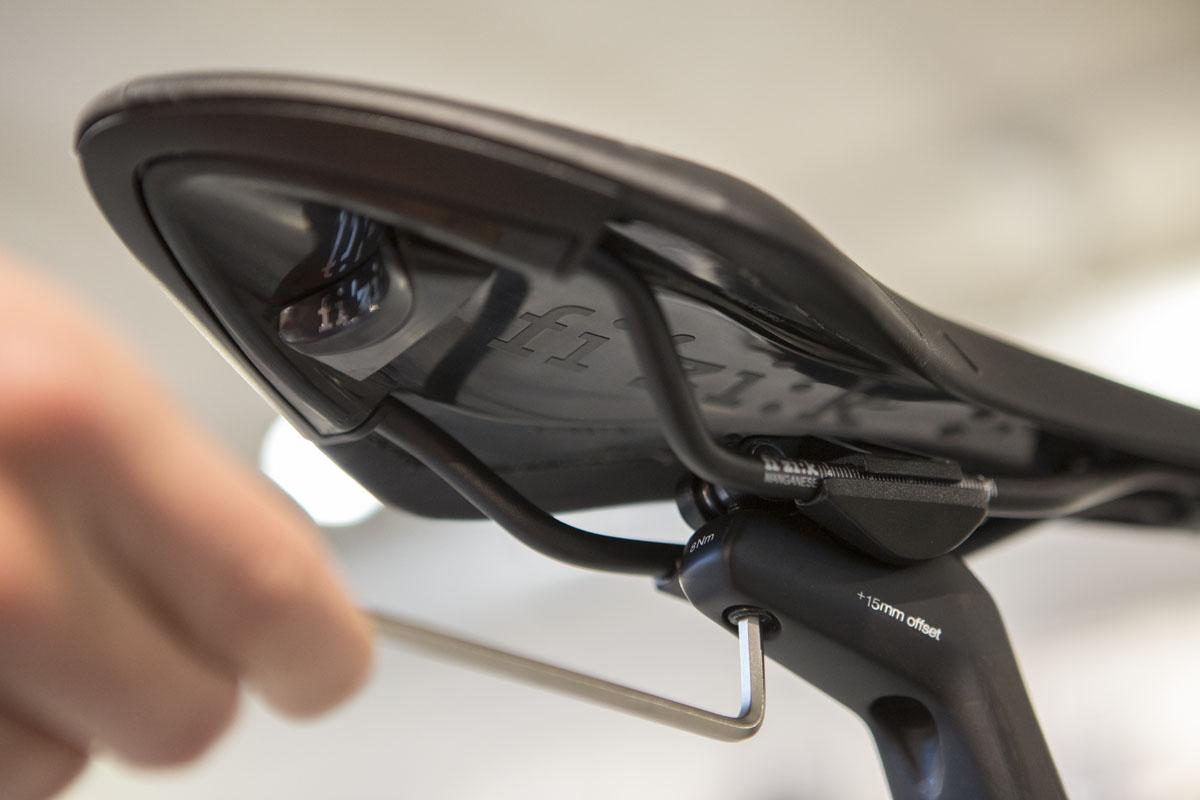
You can determine the correct setback of the saddle by using a plumb line (piece of string with a weight at the end).
Step 1
Sit on your bike and bring the pedals in a horizontal position.
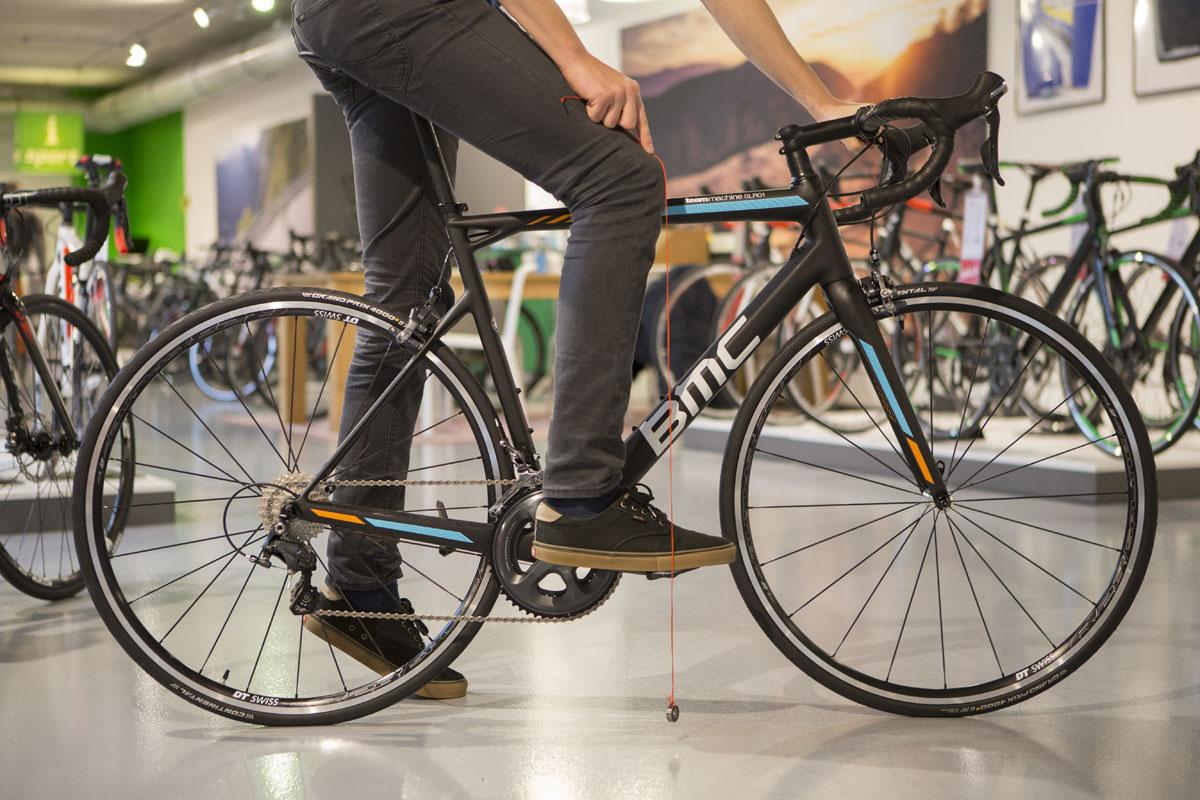
Step 2
Drop the plumb line over the front over the knee of the leg in front.
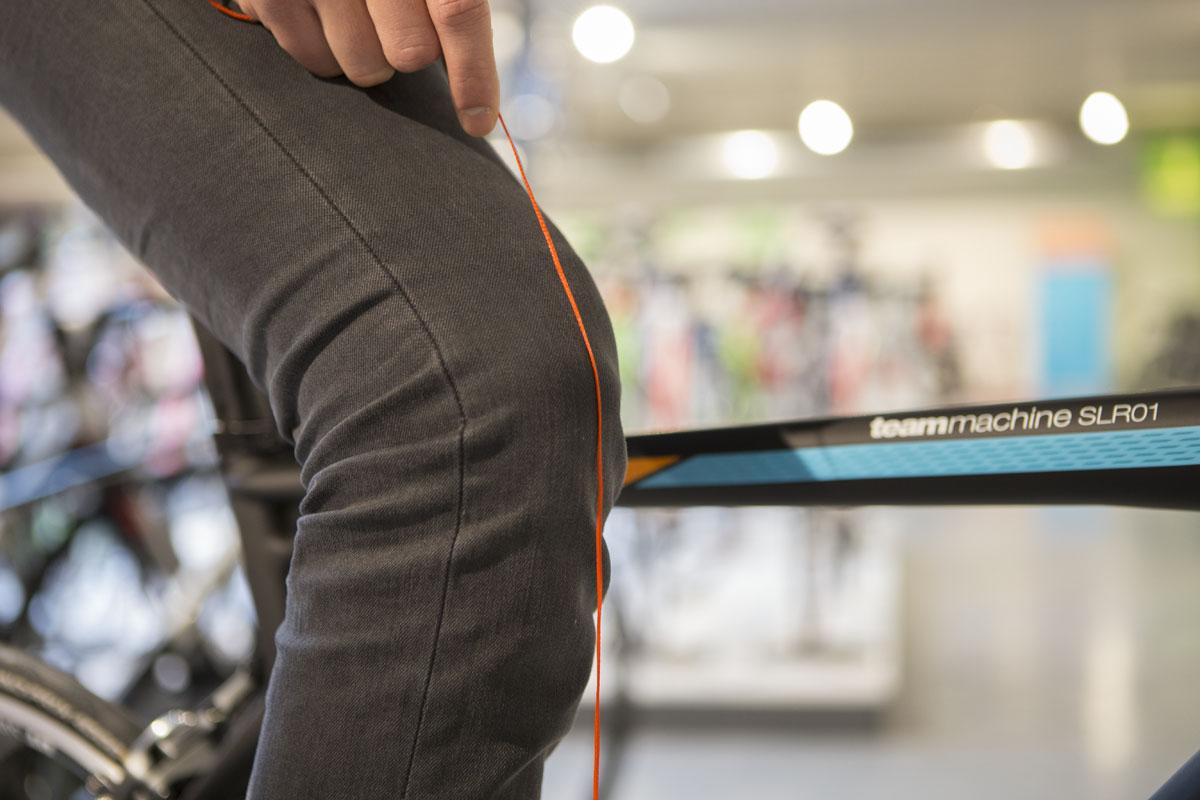
Step 3
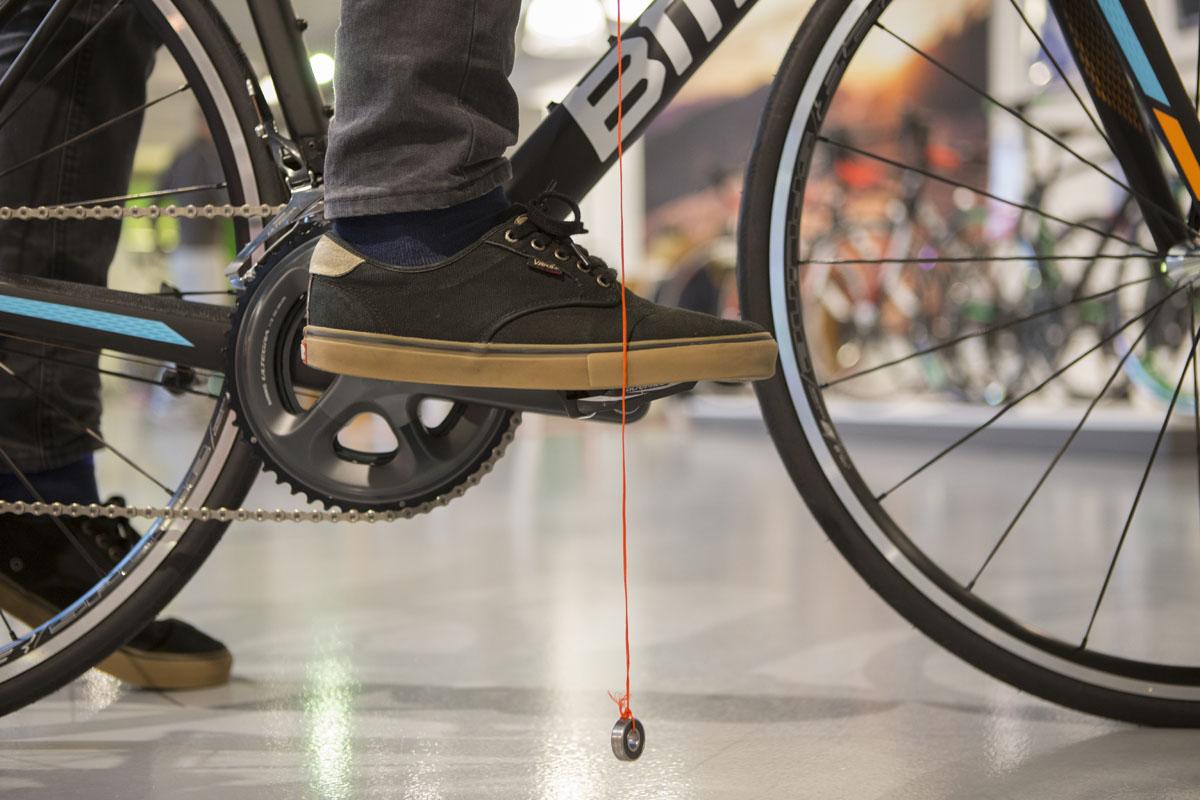
The plump line should fall right “through” the axle of your pedal. If it’s too far forward, then move the saddle back. Move the saddle forward if the line is too far back.
Can you set your saddle in a slanted position?
Generally, your saddle should be set horizontally. You should only change this if if you suffer from specific problems and you know for sure that your saddle height and the setback are correct. Do you suffer from back pain? In that case, your saddle’s nose might be too far forward.
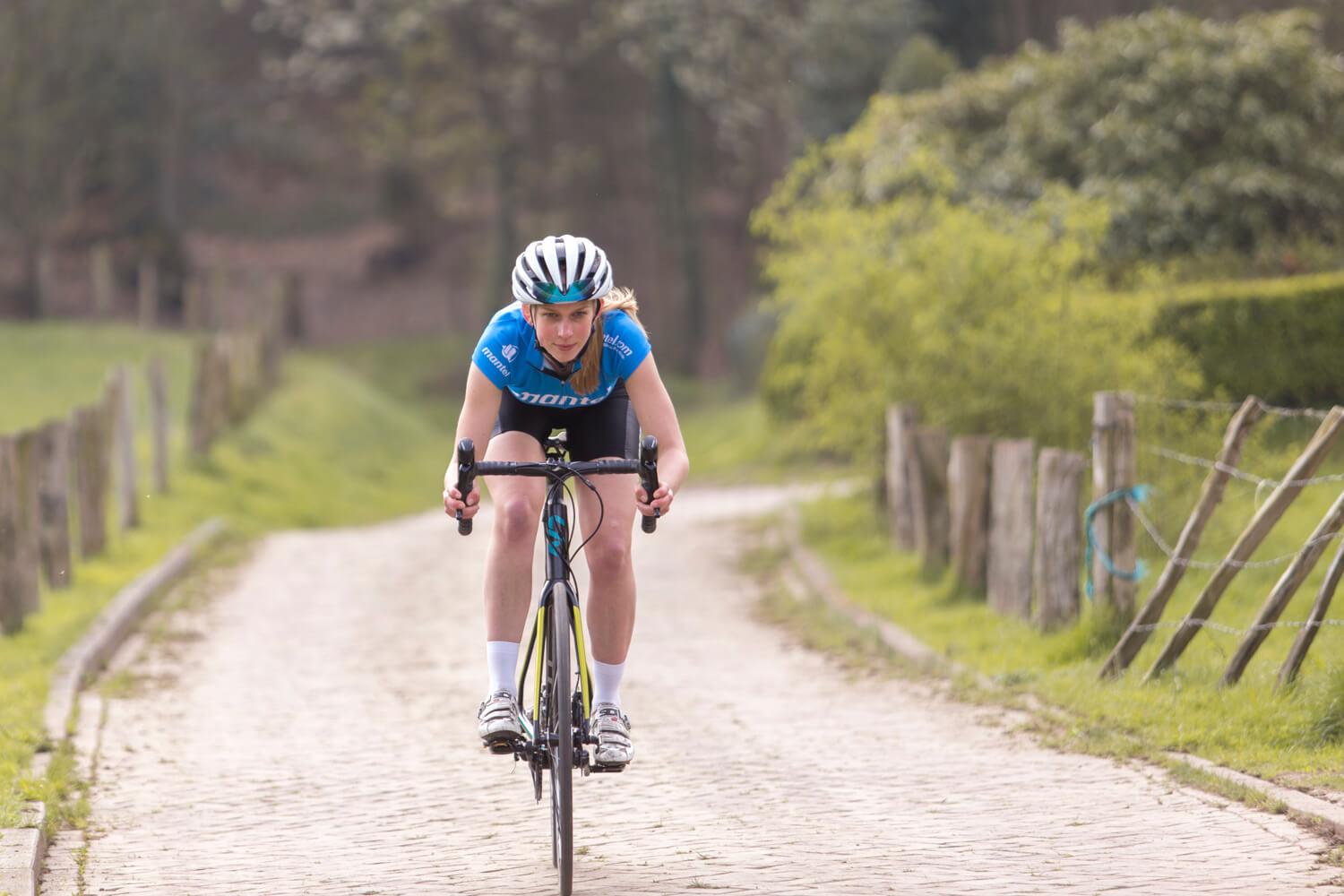
Do you suffer from problems with your hands, wrists and shoulders? Then you might have to tilt the saddle nose slightly upward.
Which saddle adaptations for which problem?
When you don’t have any problems when cycling, it’s likely that everything is set up correctly. Do you have a specific problem and want to experiment with the seat height and saddle position? Below you find a few tips for adjusting the saddle position yourself.
Tips for adjusting your seat height and position
- Your saddle is too high if your hips move from side to side while you’re riding. This becomes abundantly clear when you’re riding behind someone.
- When you raise your saddle, do so with small increments and not with centimetres at a time. Start off by going up 2 or 3 millimetres and go for a ride. When you feel comfortable, try adding another millimetre or 2.
- Remember that your body will eventually adapt to almost any position. Something which feels a little awkward at first can feel completely natural after a while. Don’t hesitate to experiment, but avoid any extremes!
Do you worry about your bike saddle or any serious problems?
Do you suffer from serious problems, or don’t you achieve the desired results after some experimenting? Then you should ask a professional. A bike fitting at a sports centre might do the trick.
When doing a bike fitting, you body position is analysed in detail and your bike is set up accordingly.
Olle Vastbinder
You can find me on a bicycle almost every day. I commute each day from my house to work and back. Often on my road bike, and during the winter on an old crosser. And if that isn't enough, you can find me on my bike during most weekends too. On my trusty road bike or my mountainbike. And if you can't find me outdoors riding my bike, odds are I might be riding on Zwift
Related posts

How to service the Shimano hydraulic disc brakes on your road or mountain bike [How-To]
25 February 2022A growing number of sports bikes are equipped with disc brakes nowadays ...

How do I know when I need to replace my bike parts?
31 January 2022As a cyclist, you often read about the importance of maintaining your bike well ...

How-To: Set Up your Tubeless Tyres
21 October 2016Tubeless tyres are a regular sight with mountain bikers, and the classic tyre-inner tube combination is beginning to ...
 Nederland
Nederland België
België Deutschland
Deutschland United Kingdom
United Kingdom Finland
Finland Ireland
Ireland Luxembourg
Luxembourg Portugal
Portugal Poland
Poland Österreich
Österreich France
France España
España Italia
Italia Sverige
Sverige Danmark
Danmark










































































































































































































































